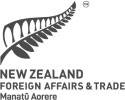Supporting the Government’s goal of doubling export value over the next decade is a focus for the Ministry, through the delivery of an intensive, targeted programme of trade initiatives and economic diplomacy.
Geopolitical competition and growing protectionism globally mean advancing this work is critical, to build New Zealand's economic prosperity and resilience; and support an export sector that sustains more than half a million jobs and drives productivity, income and employment.
Over 2024–25, the Ministry advanced six key work areas:
- Strengthening New Zealand's trade architecture;
- FTA implementation;
- Resolving non-tariff barriers (NTBs);
- Promoting New Zealand exports;
- Rule and norm-building; and
- Resilience and security.
The Ministry has strengthened New Zealand’s trade architecture by concluding and signing the NZ–United Arab Emirates (UAE) Comprehensive Economic Partnership Agreement (CEPA) (and a bilateral investment treaty). We concluded negotiations with the Gulf Cooperation Council (GCC), our 6th largest export market. Signature of this agreement is anticipated in 2025. Extensive engagement with India culminated in agreement to launch comprehensive FTA negotiations in March 2025.
The updated ASEAN–Australia–New Zealand FTA (AANZFTA) entered into force in April 2025, with twoway trade now worth over NZD$9.5 billion. The Ministry has intensified efforts to implement existing FTAs, including those with the UK and EU. Exports to the UK and the EU increased by approximately 20 percent in 2024, by NZD$600 million and NZD$1 billion respectively. This contributed to New Zealand surpassing NZD$100 billion in total exports for the first time (data for year-end December 2024). We continue to broaden the membership of the Comprehensive and Progressive Agreement for Trans- Pacific Partnership (CPTPP) with Costa Rica presently moving through the accession process. New Zealand also resolved a CPTPP dairy quota dispute with Canada. It has committed to changing the way it administers its dairy quotas under CPTPP, which will improve New Zealand exporters’ access to Canada’s valuable dairy market.
Geopolitical headwinds have required intensified efforts to sustain, defend, strengthen and modernise the rules-based trading system. Since early 2025, the Ministry has stood up a new work stream in response to developments in United States’ tariff policy. This includes regular and intensive engagement with the New Zealand exporters to provide advice about navigating the changes which have taken place, and the uncertainties associated with them — including a sharp increase in tariffs faced by exporters.
The Ministry has coordinated a NZ Inc-wide approach to resolving non-tariff barriers (NTBs), including by establishing a priority list of NTBs, which requires ongoing review and engagement. Fifteen NTBs affecting more than NZD$600 million worth of exports were resolved this year.
Working closely with NZTE, the Ministry contributed to seven trade missions in 2024–25, including Prime Ministerial-led delegations to China in June 2025 (focused on trade growth and education and tourism) and to India in March 2025 (where FTA negotiations were launched). These Trade Missions complement the support provided to New Zealand businesses through our Economic Diplomacy Programme, which encompasses market intelligence reporting, an export helpdesk, tracking NTBs, and other online tools — all geared to help New Zealand businesses succeed in overseas markets.
Progress has been made to expand the Digital Economy Partnership Agreement (DEPA), with discussions on Costa Rica’s accession concluded in early 2025 and new accession processes established for Peru and the United Arab Emirates. There is significant interest from trade partners and civil society in the Agreement on Climate Change, Trade and Sustainability (ACCTS). Work has commenced, also, on a new Green Economy Partnership Agreement. We have continued our strong engagement with New Zealand businesses on economic resilience and security, particularly important in the face of the pressure on the rules-based trading system.
As part of the Ministry’s trade and economic focus, we engage closely with Māori, domestic peak bodies, businesses and exporters and wider civil society. This ensures that a range of interests can be represented, reflected or protected in trade policy and negotiations. In 2025–26, geopolitical dynamics will continue to influence trade flows exposing key markets to elevated downside risks that may reduce demand for New Zealand exports. Further protectionism is likely, including increases in both tariff and non-tariff barriers.
Case study: New Zealand–UAE CEPA — our fastest-ever FTA negotiation
New Zealand and the United Arab Emirates (UAE) signed a FTA, the NZ–UAE Comprehensive Economic Partnership Agreement (CEPA), on 14 January 2025. The CEPA (and a related Bilateral Investment Treaty) was signed during the Prime Minister’s visit to the UAE. The CEPA is expected to enter into force in August 2025. The UAE is one of New Zealand’s largest markets in the Middle East, with goods and services exports totalling NZD$1.2 billion in 2024. New Zealand’s key exports to the UAE include dairy, industrial products, meat, fruit and travel services.
The UAE’s dynamic, high-value market offers New Zealand businesses significant opportunities for export growth and diversification. The CEPA underpins these opportunities and supports the Government’s goal of doubling the value of exports in 10 years.
Negotiations for the CEPA were conducted by a team across a number of government agencies including the Ministry of Foreign Affairs and Trade, the Ministry for Primary Industries, the Ministry of Business, Innovation and Employment, and Customs. Following an intensive effort, the negotiations were concluded in just over four months, making this New Zealand’s fastest-ever FTA negotiation.
Throughout the CEPA negotiations, the Ministry, together with other government agencies, engaged with a range of domestic partners and stakeholders, including Māori, NGOs, unions, businesses, industry associations and civil society. These engagements helped inform, and shape, negotiating positions.
Key benefits of the CEPA include:
- Expansion of New Zealand’s FTA network into the Middle East for the first time, providing new opportunities and certainty for New Zealand businesses.
- New Zealand producers will enjoy significantly enhanced access to the UAE market, with 99 percent of goods exports able to access the market duty-free. This includes all New Zealand’s dairy, red meat, horticultural and industrial products immediately once the Agreement enters into force.
- A package of trade-facilitative rules will ensure exporters can take advantage of the tariff preferences easily. In addition, rules on digital trade, non-tariff barriers, intellectual property and competition will complement the market access outcomes, and further help New Zealand businesses in the UAE.
- Transparent, non-discriminatory rules for our services exporters will ensure they are operating on a level playing field. Commitments on key services sectors of interest for New Zealand, including professional services, education services, and the audio-visual and gaming sectors will ensure our exporters receive no less favourable treatment than domestic UAE companies, and better treatment than other foreign service suppliers in many cases.
- Significant opportunities to enhance regional cooperation in areas including agriculture and sustainable energy, aviation and maritime sectors, given the UAE’s position as a key export destination and hub in the Gulf region.
- Provisions that support new opportunities for Māori exporters, including a dedicated Māori trade and economic cooperation chapter. Consistent with our other trade agreements, a Treaty of Waitangi exception is included.
- A Trade and Sustainable Development chapter reinforces New Zealand’s long-standing trade and environment and trade and labour frameworks by promoting the interests of women, and protecting labour rights and climate change laws and regulations.
- The Bilateral Investment Treaty, concluded in conjunction with the CEPA, promotes and protects investment. It supports economic growth and prosperity, while ensuring New Zealand’s right to regulate is protected. Consistent with existing policy, the Agreement does not contain Investor-State Dispute Settlement (ISDS) provisions.
Overall, the CEPA, together with the FTA concluded with the six-member Gulf Cooperation Council (NZ–GCC FTA), positions New Zealand to maximise trade and economic opportunities in the dynamic Gulf region, and supports the Government’s goal of doubling export value over the coming decade. Together these agreements will further expand New Zealand’s network of FTAs, and significantly enhance commercial opportunities and certainty for New Zealand exporters.

